Author: Daniel Li, CoinVoice
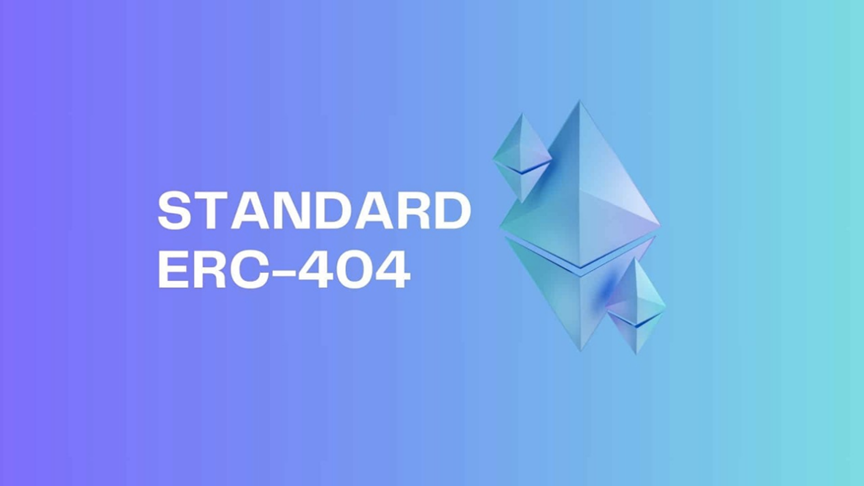
Recently, the Token Bonding protocol, represented by ERC-404, has attracted widespread attention in the NFT field. The success of projects like Pandora has demonstrated the potential of Token Bonding, revitalizing the NFT field. However, the high gas fees have limited the liquidity and development of Token Bonding. While new projects and standards (such as Dn-404, ERC-1111, and ERC-X) have optimized Token Bonding, they are still in the early stages and require further practice and security audits. We need to maintain a cautious attitude regarding how long the popularity of ERC-404 can last. To achieve sustainable development, Token Bonding will face multiple challenges such as gas fees and security. This article will explore the advantages, challenges, and future development trends of ERC-404, aiming to better understand the potential of Token Bonding and its long-term impact in the digital asset field. At the same time, we will focus on the development of new technologies and projects, providing valuable insights and prospects for readers.
What is ERC-404
ERC-404 is an innovative Ethereum token standard designed to combine the characteristics of fungible tokens (ERC-20) and non-fungible tokens (ERC-721), creating a new type of token. The purpose of creating this standard is to provide a breakthrough solution that combines the advantages of tokens and NFTs.
The ERC-404 standard was created under the Pandora project by an anonymous developer. The name of this standard is inspired by the internet error code "404 Not Found," symbolizing the spirit of the unknown and exploration. It signifies the creation of a new token standard that can address future challenges and embrace new possibilities.
By using the ERC-404 standard, we can create tokens with partial ownership features. This means that token holders can have partial ownership of NFTs, rather than just complete ownership. This hybrid token type creates more flexibility and opportunities for the trading and liquidity of NFTs.
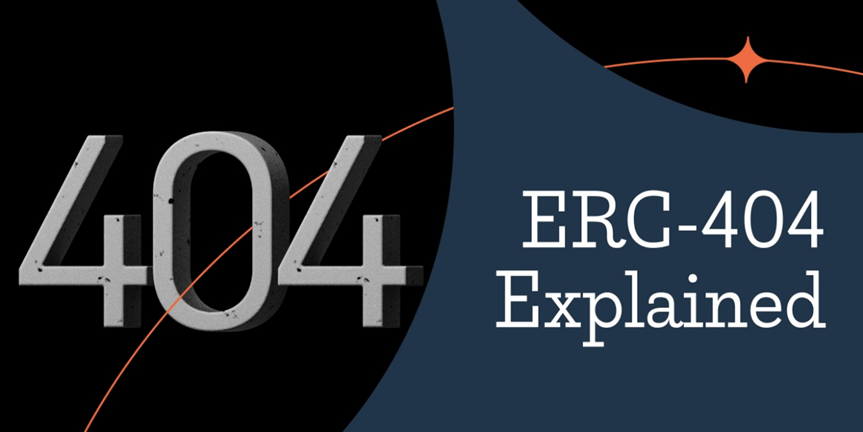
Pandora is the first NFT project created using the ERC-404 protocol standard and has played a significant role in the formation of ERC-404. Pandora has received support from cryptocurrency exchanges and institutions such as OKX, and the trading volume of its individual NFTs continues to break new records—Pandora #54222 NFT was sold for 533 WETH, setting a new record for mining. In the past, NFT projects that could sell at this price were mostly blue-chip projects like BAYC and CryptoPunks. The fact that Pandora, which was established less than a month ago, achieved this record once again demonstrates the huge potential of Token Bonding. Apart from Pandora, the 404 ecosystem includes popular projects such as DeFrogs and Rug.
Since its launch, ERC-404 has become one of the hottest trends in the crypto world, attracting the attention of enthusiasts and investors. Its design concept is exceptionally unique, achieving the organic integration of fungible tokens (ERC-20) and non-fungible tokens (NFT, ERC-721). This breakthrough feature brings new possibilities and opens up pathways for innovation in the NFT field.
Traditionally, NFTs have been seen as illiquid assets, and the emergence of ERC-404 has addressed this issue. Through the ERC-404 standard, holders of ERC-404 tokens automatically acquire the corresponding NFTs. These tokens can be freely transferred or even destroyed, significantly increasing the liquidity of NFTs. This revolutionary concept is not only beneficial to individual token holders but also has a broader impact on the entire market.
Furthermore, the appeal of ERC-404 lies not only in its innovative design but also in its potential for market growth. As more projects adopt the ERC-404 standard and engage in trading activities, the market value of ERC-404 tokens may expand rapidly. This growth trajectory is expected to attract a large influx of investors and further stimulate interest in the ecosystem. With the continuous expansion of the adoption and implementation of the ERC-404 standard, we can anticipate the emergence of more outstanding projects and innovative applications in the future.
Operation Principle of ERC-404
ERC-404 combines elements of the ERC-20 and ERC-721 standards, which traditionally do not interact with each other, making it different from previous NFT fractionalization protocols that simply issue fragmented NFTs. The design purpose of ERC-404 is to achieve native fractionalization and liquidity in NFT projects that implement this standard, providing new pathways for experimentation and trading NFTs.

How does ERC-404 work?
The operation of ERC-404 can be briefly summarized in the following steps:
Create Replicant NFT: Each ERC-404 token corresponds to a unique Replicant NFT. Replicant NFTs are non-fungible digital assets with unique identifiers and attributes, such as art images, metadata, and rarity.
Purchase ERC-404 tokens: Investors can purchase ERC-404 tokens, thereby acquiring partial ownership of the associated NFT. This concept of partial ownership allows investors to participate in the market by purchasing partial NFTs without the need to buy the entire NFT at once.
Trade and transfer ERC-404 tokens: When an investor owns an ERC-404 token and decides to trade or transfer it, the token will be used. This will trigger the burning and re-minting process of the Replicant NFT.
Burning and re-minting: During the burning and re-minting process, the original Replicant NFT will be destroyed, and a new Replicant NFT will be re-minted. This changes the ownership of the token, and investors can hold a new, different partial NFT.
Random attribute changes: During the burning and re-minting process, the appearance and attributes of the newly minted Replicant NFT will undergo random changes. This means that the newly minted NFT may have a different appearance, attributes, or rarity than before. This randomness ensures the uniqueness and unpredictability of each Replicant NFT.
Through these steps, ERC-404 achieves the liquidity and fractionalization of NFTs. Investors can participate in the market by purchasing tokens representing partial NFTs, without the need to buy the entire NFT at once. At the same time, the mechanism of random attribute changes and refreshing NFTs brings more fun and exploration space for investors, increasing the attractiveness and value of NFTs. However, since attribute changes are random, users cannot precisely control the final attributes of the NFT. Therefore, when participating in the ERC-404 ecosystem, users need to weigh the risks and rewards between their investment and the potential changes in NFTs.
Can the ERC-404 craze continue?
The popularity of Pandora has gained market recognition for the Token Bonding model explored by ERC-404, and similar ERC-404 projects have emerged one after another. However, most people are skeptical about whether this craze can continue. As an experimental project, ERC-404 is not yet perfect, and there is still considerable uncertainty at present.

First, it is important to note that ERC-404 is an unofficial standard, and its connection to the "ERC" status is only nominal. In other words, it was not developed through the traditional Ethereum Improvement Proposal (EIP) and Ethereum Request for Comments (ERC) process. Official ERC standards, such as ERC-20 and ERC-721, have undergone extensive review in terms of security, practicality, and compatibility within the Ethereum ecosystem. In contrast, ERC-404 lacks this level of scrutiny, raising concerns about potential vulnerabilities and overall security.
The ERC-404 development team is aware of this issue and is actively formulating an Ethereum Improvement Proposal (EIP) for the token standard. If approved, this standard will become an "official" standard recognized by the Ethereum Foundation, a non-profit organization that maintains the Ethereum blockchain, for use within the Ethereum ecosystem as an agreed-upon framework for compatibility with Ethereum-based applications.
Furthermore, the Token Bonding model of ERC-404 itself provides little help to the liquidity of NFTs and, in a sense, only offers a novel way to play with tokens, unable to solve the problem of NFT illiquidity. With the widespread adoption of ERC404Token, the Ethereum network will face increasingly severe congestion issues, leading to rising transaction fees and slower processing times. Therefore, there is a divergence within the Ethereum community regarding the long-term viability of ERC-404 until it is perfected.
Additionally, ERC-404 will face more competition from newcomers, with DN404 being hailed as an alternative to ERC-404. Developed by a group of cryptocurrency enthusiasts, DN404 aims to provide similar benefits to ERC404 but with higher efficiency and lower transaction costs. By utilizing two independent but interconnected contracts—a contract based on ERC-20 and a mirrored ERC-721 contract—DN404 attempts to address the shortcomings of its predecessor.
As an experimental project, ERC-404 still has imperfections, but by seamlessly integrating the functionalities of ERC-20 and ERC-721, creating a semi-fungible token standard, ERC-404 has provided a groundbreaking solution to the challenges of decentralization and liquidity in NFTs. The birth of ERC-404Token has also become an important milestone in the evolution of Ethereum token standards.
Overview of 404 Protocol Projects
Pandora
Pandora is the first NFT project based on ERC-404, utilizing the standard to create NFTs with native fractionalization. This not only enhances liquidity but also makes innovative trading strategies within the Pandora ecosystem possible, such as liquidity mining and liquidity staking.
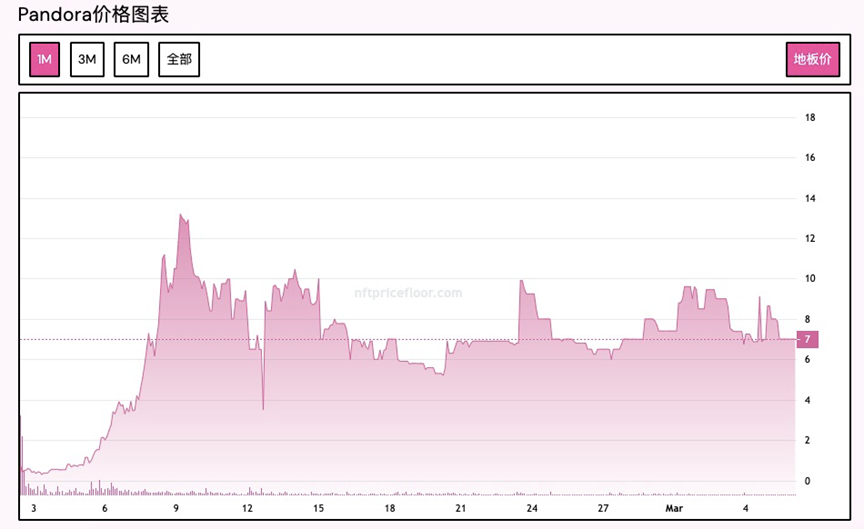
Pandora launched its NFT fractionalization project on February 2, allowing users to acquire ERC-404 tokens by purchasing PANDORA tokens, achieving fractional ownership of Pandora Replicants. Additionally, Pandora can also be purchased directly on OpenSea.
On February 23, Wintermute Trading became the market maker for Pandora, minting 100 PANDORA tokens and transferring them to the Wintermute Trading address. This attracted the attention of whale investors, causing an increase in the price of Pandora. Currently, the real-time price of Pandora is $20,673.69, with a market cap of $206.74M USD. The floor price of Pandora Replicants is 7ETH, with a 24-hour trading volume of 449.79ETH.
DeFrogs
DeFrog, developed in July 2022, has recently adopted the ERC-404 standard, increasing its popularity. It is designed to mimic Pandora and has issued a total of 10,000 DEFROGS tokens. Similar to Pandora, when users purchase DEFROGS tokens on Uniswap, they not only receive the tokens themselves but also receive a DeFrogs NFT associated with the tokens. This means that users holding DEFROGS tokens will have partial ownership of the NFT, a concept achieved through the ERC-404 protocol. This allows users to participate in the market and profit from the appreciation of NFTs without the need to purchase the entire NFT at once.
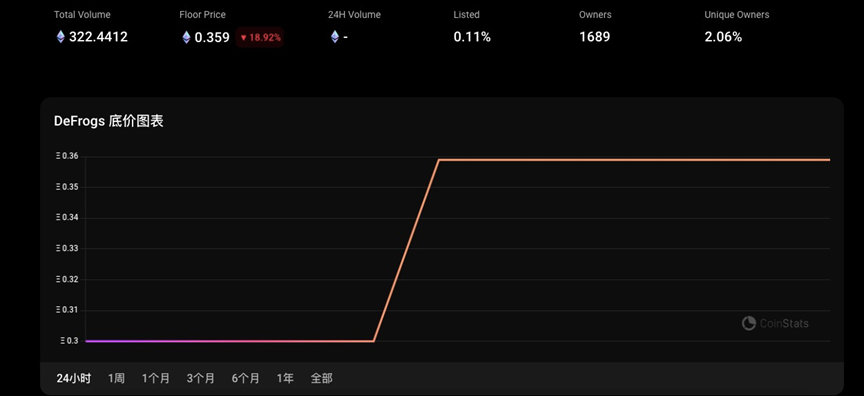
The popularity of Pandora has drawn attention to DeFrogs, with the price of its project token DEFROGS once breaking $3500 and currently at $920. The floor price of DeFrogs NFT is 0.359E, with a total market cap of 3.53KE.
Monkees
Monkees is the newest member of the ERC-404 ecosystem, offering a range of monkey-themed PFPs. As a newcomer, Monkees has leveraged the growing interest in this new token type, with its price rising by over 2,000% from the initial offering, trading at over $17,000 per token. This has brought its market cap to $1.8 million, with liquidity at $256,000.
In addition to the mentioned ERC-404 projects, a new wave of 404 projects has emerged outside the Ethereum ecosystem. Among them, sheboshis, the official 404 project of the shib community, is the first to follow on other chains, with a total issuance of 20,000, which is currently sold out. Furthermore, based on Cosmos, Injective has collaborated with the decentralized exchange DojoSwap to release the CW-404 standard, achieving a similar "semi-fungible token" as Pandora on Ethereum, allowing for free conversion between NFTs and tokens. Additionally, there is the BSC-404 protocol standard on the Binance Smart Chain, an experimental, hybrid BEP20/BEP721 protocol with native liquidity and fractionalization features. These projects all aim to provide users with a wider range of usage and trading options by integrating the functionalities of NFTs and tokens.
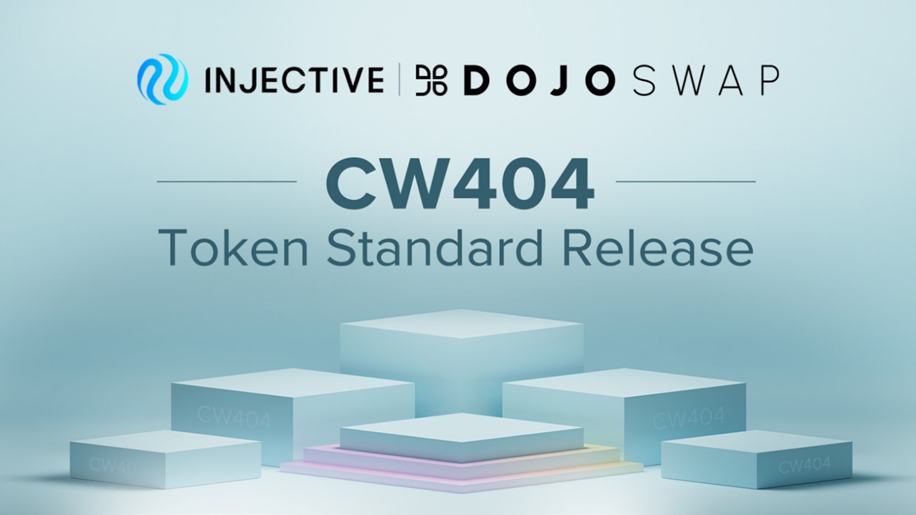
However, these projects are still in the early stages and require further observation and evaluation of their long-term development and market acceptance. Currently, apart from the Pandora project, most 404 projects are relatively weak, with low trading volumes and significant price fluctuations. Market participants should exercise caution and closely monitor the development of the market and the actual outcomes of the projects. This will allow for a better assessment of their long-term development potential and risks, enabling wise investment and participation decisions.
免责声明:本文章仅代表作者个人观点,不代表本平台的立场和观点。本文章仅供信息分享,不构成对任何人的任何投资建议。用户与作者之间的任何争议,与本平台无关。如网页中刊载的文章或图片涉及侵权,请提供相关的权利证明和身份证明发送邮件到support@aicoin.com,本平台相关工作人员将会进行核查。




